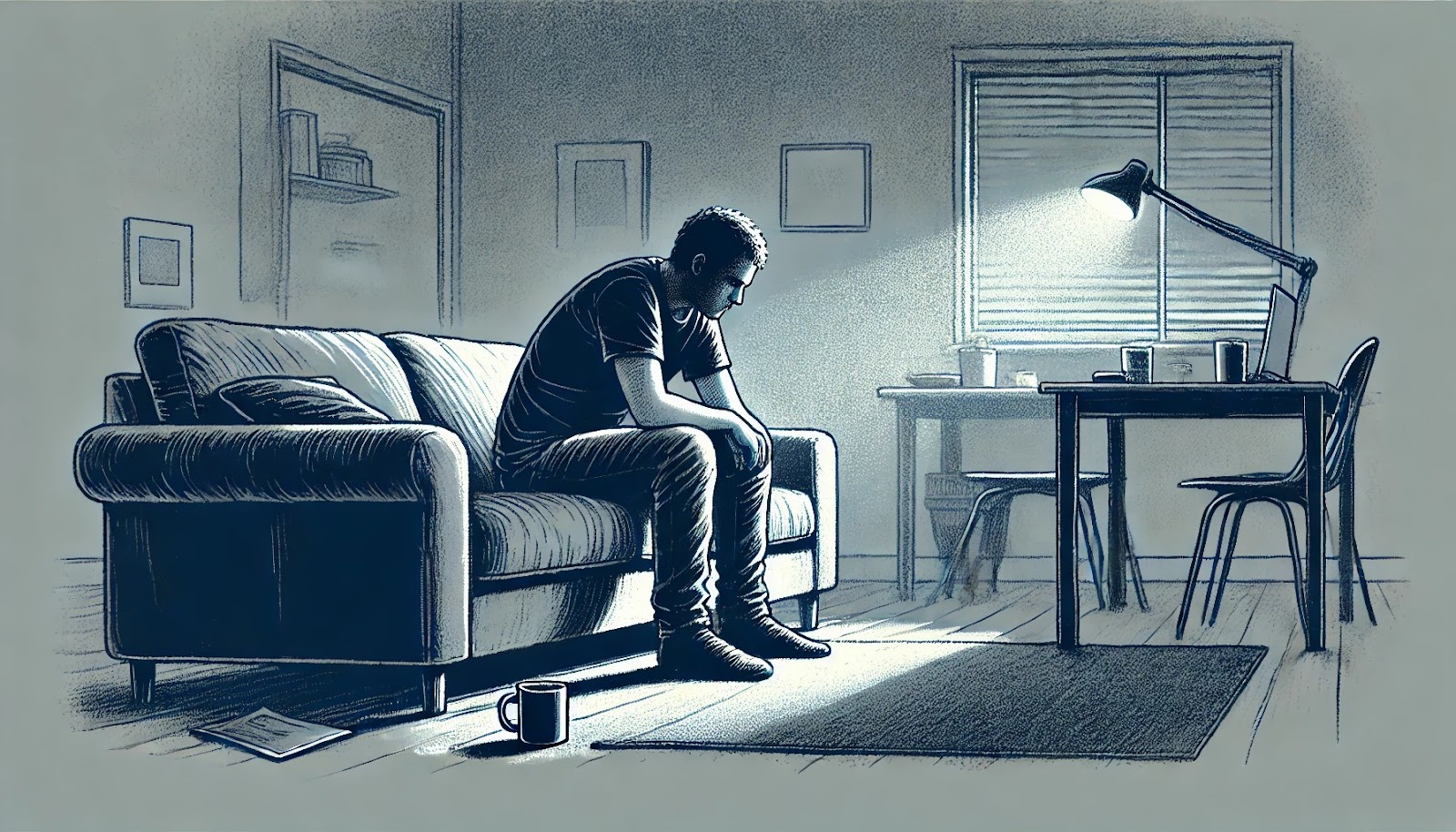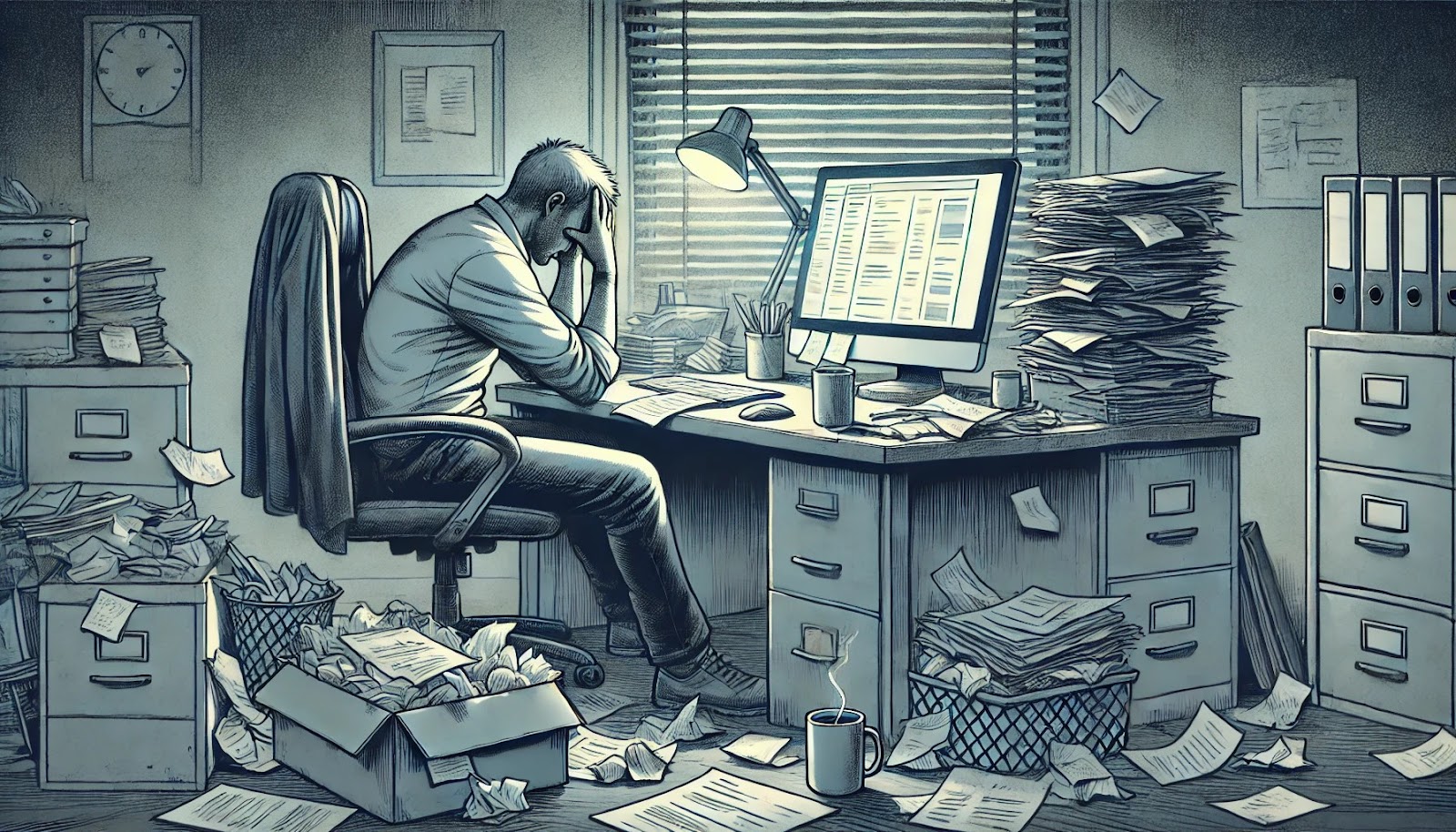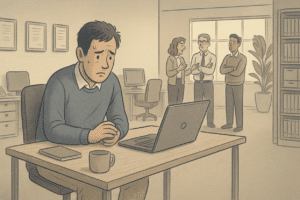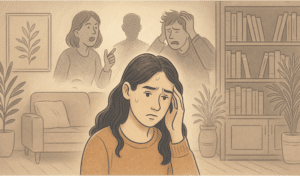Key Takeaways
- Burnout is often linked to work stress, whereas depression can affect all areas of life.
- Symptoms of both conditions can overlap, making diagnosis challenging without professional help.
- Burnout may lead to cynicism and reduced professional efficacy, while depression affects mood and energy more broadly.
- Treatment for depression often involves therapy and medication, while burnout is addressed by changing work conditions and lifestyle.
- A Mission for Michael (AMFM) offers a whole-person burnout and depression treatment plan at multiple behavioral health centers across California, Washington, and Virginia.
Depression vs Burnout: Quick Guide
The core distinction between depression and burnout lies in their origins and impacts. Depression is a mental health disorder with biological, psychological, and social factors. It affects mood, energy levels, and motivation across all life areas. Burnout, however, is specifically linked to prolonged stress in the workplace. It results in emotional exhaustion, cynicism, and decreased work performance.
Understanding these foundational differences helps in recognizing which condition you or a loved one might be experiencing. While they share overlapping symptoms, the triggers and the domains they affect differ significantly.
Why It Matters: Diagnosis and Impacts
Accurate diagnosis determines the treatment path. Misdiagnosing burnout as depression or vice versa can lead to ineffective treatment strategies. For instance, medication might not be the first line of treatment for burnout, but it could be essential for managing depression.
Besides that, understanding these differences impacts how we approach recovery. Depression often requires a combination of therapy and medication, while burnout might be addressed by changing work conditions and adopting stress management techniques.
This distinction highlights the importance of seeking professional guidance to manage these complex conditions.
| A Mission For Michael: Expert Mental Health Care Founded in 2010, A Mission For Michael (AMFM) offers specialized mental health care across Southern California, Washington, and Virginia. Our accredited facilities provide residential and outpatient programs, utilizing evidence-based therapies such as CBT, DBT, and EMDR. Our dedicated team of licensed professionals ensures every client receives the best care possible, supported by accreditations from The Joint Commission and the California Department of Health Care Services. We are committed to safety and personalized treatment plans. Start your recovery journey with AMFM today! |
Understanding Depression

Depression is a complex mental health disorder that impacts how you feel, think, and handle daily activities.
Causes of Depression
- Genetic factors: A family history of depression can increase the risk.
- Biological factors: Changes in neurotransmitter levels in the brain can contribute to depression.
- Environmental factors: Stressful life events, such as loss or trauma, can trigger depression.
- Psychological factors: Low self-esteem and negative thought patterns can exacerbate depression.
Symptoms and Signs
- Persistent feelings of sadness or emptiness
- Loss of interest in previously enjoyed activities
- Significant changes in appetite or weight
- Sleep disturbances, such as insomnia or oversleeping
- Fatigue or lack of energy
- Feelings of worthlessness or guilt
- Difficulty concentrating or making decisions
- Thoughts of death or suicide
Diagnosing Depression
Diagnosis of depression involves a thorough evaluation by a mental health professional. This process includes:
- Clinical interviews to assess symptoms and their duration
- Psychological questionnaires or assessments
- Reviewing personal and family medical history
- Ruling out other medical conditions that may mimic depression symptoms
Accurate diagnosis is essential for developing an effective treatment plan customized to the individual’s needs.
Depression’s Impact on Daily Life
Depression affects relationships, work performance, and overall quality of life. People with depression may struggle with maintaining relationships, experience decreased productivity at work, and find it challenging to enjoy life.
For example, someone with depression might feel too exhausted to socialize with friends or lack motivation to complete work tasks. That’s why it’s important to get treatment to manage depression effectively.
Read More: Dysthymia vs Depression: What are the Differences?
Exploring Burnout

Burnout is a state of emotional, physical, and mental exhaustion caused by prolonged and excessive stress – usually at workplace. It occurs when you feel overwhelmed, emotionally drained, and unable to meet constant demands.
Causes of Burnout
Burnout is primarily caused by chronic workplace stress. This stress can result from various factors, including excessive workload, lack of control over tasks, and insufficient support from colleagues or management. When these stressors persist without adequate recovery time, they can lead to emotional exhaustion and burnout.
Besides that, unclear job expectations and a lack of recognition for achievements can contribute to feelings of burnout. When individuals feel undervalued and unsure of their roles, it can lead to a sense of frustration and detachment from work.
Burnout Symptoms
The symptoms of burnout are often centered around the workplace but can spill over into personal life as well. Common symptoms include:
- Feeling overwhelmed or emotionally drained
- Cynicism or detachment from work responsibilities
- Reduced professional efficacy and productivity
- Physical symptoms such as headaches or gastrointestinal issues
- Difficulty concentrating and completing tasks
Burnout’s Effect on Work
Burnout often leads to decreased productivity, as individuals struggle to concentrate and complete tasks efficiently. This decline in performance can result in missed deadlines and increased errors.
Additionally, burnout can lead to increased absenteeism and a higher likelihood of leaving the job altogether. When employees feel disconnected and undervalued, their motivation to perform well diminishes, affecting the overall morale of the workplace.
Why Burnout Happens
Burnout occurs when the demands of a job exceed the resources available to manage them. This imbalance creates a state of chronic stress, where individuals feel they cannot keep up with the expectations placed upon them. Over time, this stress takes a toll on mental and physical health, leading to burnout.
Additionally, research shows that organizational culture plays a significant role in burnout. Environments that prioritize high performance without considering employee well-being are more likely to cause burnout.
Comparing Symptoms: Depression and Burnout
| Symptom | Depression | Burnout |
| Mood/Emotions | Persistent sadness or low mood, feelings of worthlessness or guilt | Feeling overwhelmed or emotionally drained, cynicism or detachment from work |
| Interest/Motivation | Loss of interest in activities | Reduced professional efficacy |
| Appetite/Weight | Changes in appetite or weight | Less commonly directly related |
| Sleep | Sleep disturbances (insomnia or oversleeping) | Less commonly directly related, but fatigue is a factor |
| Energy | Fatigue or lack of energy | Exhaustion is present, but often tied to work |
| Cognitive | Difficulty concentrating, thoughts of death or suicide | Difficulty concentrating on tasks at work |
| Focus | Impacts various aspects of life | Affects work and professional life |
Approaches to Treatment
Treatment for Depression
Treating depression requires a comprehensive approach that addresses both the psychological and biological aspects of the disorder. Therapy is a cornerstone of treatment, with options such as Cognitive Behavioral Therapy (CBT) and Individual Therapy (IT) proving effective.
Medication may be prescribed to help manage symptoms, particularly in moderate to severe cases. Antidepressants work by balancing neurotransmitters in the brain, alleviating symptoms such as low mood and lack of motivation. Work closely with a healthcare provider to find the right medication and dosage.
Treatment for Burnout
Addressing burnout involves making changes to work conditions and adopting stress management strategies. This might include negotiating workload adjustments, setting clear boundaries, and taking regular breaks to recharge. Also get support from colleagues and supervisors to create a more balanced work environment.
Self-care practices such as mindfulness, exercise, and adequate rest can help manage stress and promote recovery. These strategies, combined with a supportive work environment, can significantly reduce burnout symptoms and enhance overall well-being.
Enhancing Mental Health
Seeking Support and Resources
Accessing the right resources, finding support groups, and educational materials is essential for managing depression and burnout.
Connecting with others who have similar experiences can provide comfort and encouragement. Support groups offer a space to share challenges and successes, fostering a sense of community and understanding.
Role of Professional Help
Mental health professionals can provide an accurate diagnosis and develop a personalized treatment plan. They offer a safe space to review your feelings and identify underlying causes of stress or depression.
Therapists can use various therapeutic approaches, such as CBT, to help change negative thought patterns and behaviors. In cases of depression, a psychiatrist may prescribe medication to manage symptoms effectively.
Self-Help Strategies
While professional help is essential, self-help strategies can complement treatment and support recovery. Practicing mindfulness and relaxation techniques can reduce stress and increase emotional resilience. Techniques such as deep breathing, meditation, and yoga promote relaxation and improve mood.
Engaging in activities that bring joy and fulfillment can help combat feelings of burnout and depression.
AMFM: Starting Your Path to Recovery

AMFM’s treatment centers across California, Virginia, and Washington offer personalized care plans that address the specific needs of each condition.
Understanding the distinction between depression and burnout is crucial for effective treatment. While burnout primarily stems from workplace stress and manifests as emotional exhaustion and cynicism toward work, depression is a more pervasive mental health condition affecting all aspects of life with persistent sadness and loss of interest in activities.
At A Mission For Michael (AMFM), we recognize that these conditions can sometimes overlap, with chronic burnout potentially developing into clinical depression if left untreated. Our comprehensive approach begins with a thorough assessment to determine if you’re experiencing burnout, depression, or a combination of both.
For depression, we provide evidence-based therapies like CBT and Dialectical Behavioral Therapy (DBT), medication management when appropriate, and contemporary approaches including music and art therapy. For burnout-related symptoms, we incorporate stress management techniques, lifestyle modifications, and practical strategies to restore work-life balance.
Our accredited facilities and experienced clinicians ensure you receive the highest quality care, covered by most major insurance providers. Don’t let confusion between burnout and depression delay your recovery. Contact AMFM today at 866-478-4383 for a confidential assessment and begin your journey toward renewed mental wellness.
Frequently Asked Questions (FAQ)
What is the main cause of burnout?
Burnout is primarily caused by chronic workplace stress. It occurs when job demands exceed an individual’s capacity to cope, leading to emotional exhaustion and reduced professional efficacy.
Factors contributing to burnout include excessive workload, lack of control over tasks, and insufficient support from colleagues or management. Creating a balanced work environment and addressing these stressors is key to preventing burnout.
Can burnout lead to depression?
Yes, chronic burnout can increase the risk of developing depression. The prolonged stress and emotional exhaustion associated with burnout can lead to feelings of hopelessness and despair, which are characteristic of depression.
Recognizing burnout early and taking steps to address it can prevent the progression to depression. Implementing stress management techniques and seeking professional help can mitigate the risk and promote recovery.
How can I tell if I am just tired or burnt out?
Distinguishing between general tiredness and burnout involves assessing the persistence and impact of symptoms. Tiredness typically resolves with rest and relaxation, whereas burnout persists despite adequate rest and affects work performance and emotional well-being.
Signs of burnout include chronic exhaustion, cynicism towards work, and reduced professional efficacy. If these symptoms persist and interfere with daily functioning, it may indicate burnout rather than simple tiredness.
What’s the first step in seeking treatment?
The first step in seeking treatment is acknowledging the need for help and reaching out to a mental health professional. This may involve scheduling an appointment with a therapist or counselor to discuss symptoms and concerns.
Communicate openly about experiences and feelings to facilitate an accurate diagnosis. From there, the mental health professional can develop a tailored treatment plan that addresses specific needs and goals.
What treatment options are available for depression at AMFM?
AMFM offers multiple levels of care for depression, including residential treatment, partial hospitalization programs, intensive outpatient programs, and standard outpatient therapy. AMFM provides comprehensive assessments to determine the appropriate level of care that works for an individual.







